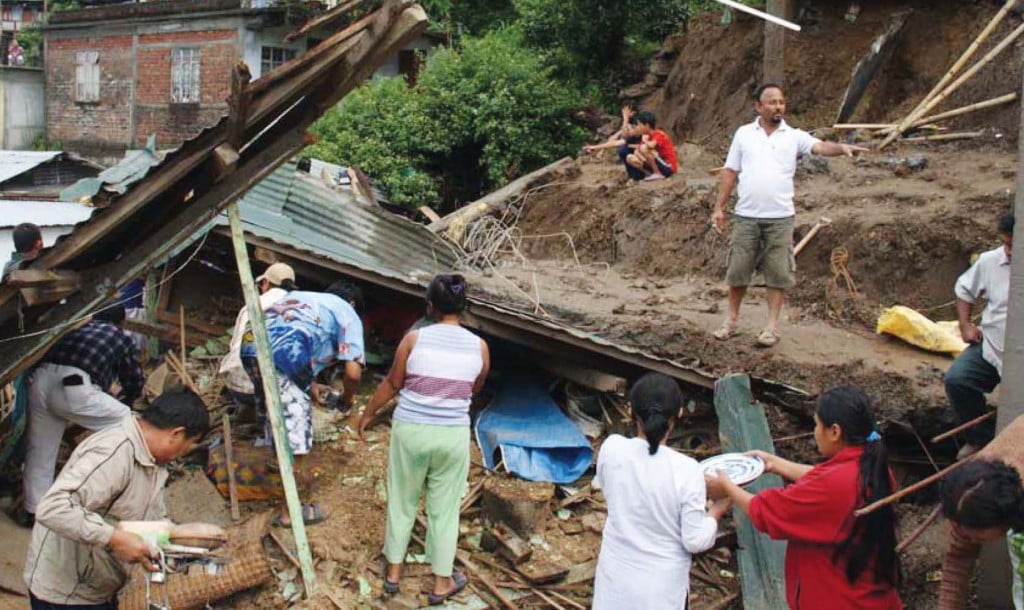Rudhir Prakash Sarma emphasises here the necessity of co-ordination between Government
Agencies and General Public during natural disaster
Nobody prefers to experience the misfortune of facing a disaster. But there are times when such situations arise and therefore such occasions call for effective and quick reactions in order to minimise the loss of lives and provide quick relief to the distressed people. Effective and well-planned participation of government agencies and the general public can be ensured only if the people are made aware of the crucial role played by the various government agencies involved in dealing with disaster and the resources at their disposal so that their optimum use can be made when the need arises.
The first step towards ensuring proper co-ordination is by making the public aware of the steps to be taken in case of a disaster so that the loss of lives can be minimised before the rescue workers manage to reach the scene and start their rescue operations. The public should try to acquaint themselves with the instructions mentioned in the various publicity initiatives undertaken by organisation entrusted with the task of mitigating the effects of disaster.
Familiarity with the instructions issued in public interest by organisations like the State Fire and Emergency Services Organisation, NDRF etcetera can go a long way when it comes to saving lives. As per the figures mentioned by the State Fire & Emergency Services Organisation, Assam, 430 lives were lost between 1996 to 2008 while 702 persons were injured in various fire related mishaps. Altogether, 114 people were also rescued during the same period.
Similarly, till the 18th of May 2010, NDRF had already saved close to 1, 34,000 human lives and retrieved 276 dead bodies in 73 response operations conducted in various parts of the country in addition to rescuing more than 6800 people in Assam alone during flood rescue operations conducted in Dhemaji, Lakhimpur, Barpeta and Kamrup districts. In Guwahati city alone, NDRF managed to rescue more than 150 people till 2011 using rubber boats and rafts from areas that experience severe water-logging every year during the monsoons.
The Disaster Management Act 2005 paved the way for the formation of the National Disaster Management Authority (NDMA) with the Prime Minister as its Chairman in addition to nine other members with the vision to build a safer India by raising the awareness levels of the stakeholders to ensure preparedness at all times to deal effectively with disasters. The NDMA is empowered to frame policies and guidelines to ensure effective disaster management. It has to take steps for capacity building to tackle disaster situations in a satisfactory manner besides laying down guidelines to be followed by the State Governments in drawing up the State Disaster Management Plans.
But all such steps taken by various agencies can be successful only when awareness programmes as well as capacity building measures go hand -in -hand with planning and preparedness. And the general public has a big role to play in ensuring the success of such ambitious plans. Instead of criticising or passing the blame to the agencies engaged in combating disasters the public should ensure that they understand and play their part well so that the agencies can engage themselves with the more serious aspects of dealing with the disaster. Studies have shown that in places where there is effective co-ordination between the public and the government agencies, the rate of fatalities is considerably less and the agencies are more successful in managing the disasters in a very efficient manner.
The public can play their part by ensuring that they put in place an effective disaster management plan and identify the resources & strategies that can be put to proper use should there be a disaster in their local area. A comprehensive disaster management plan should be chalked out in consultation with the government agencies which should contain well defined roles for various groups of individuals so that the loss of lives can be minimised and the ability of the people to withstand the impact of the disasters is maximised. Effective local participation in disaster assessment followed by prompt and effective implementation of relief operations till the arrival of the government relief and rescue teams can go a long way in reducing the loss of lives.
The nature of public response coupled with the quality of the various disaster management skills imparted to them and the level of co-ordination between the government agencies and the general public will go a long way in ensuring speedy and effective disaster management.







